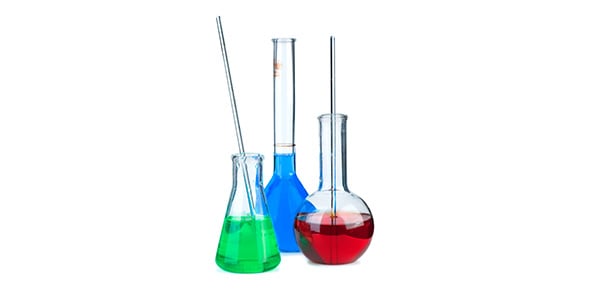Hair services that cause a chemical change that permanently alters the...
By making a point of keeping accurate, up-to-date client records, you...
Hair texture is described with the terms:
The double tool perm technique is also called the:
The second part of any perm, the application of waving solution and...
The size of the perm tool determines the:
The end paper technique that provides the most control over the hair...
When you fold one end paper in half over the hair ends like an...
Perm solution should be rinsed from the hair for at least:
The hair texture that is the most fragile and easiest to process with...
A strong, compact cuticle makes for:
When treated with chemical texture services, coarse hair is usually:
End wraps are absorbent papers used when winding hair on perm tools...
The process of rearranging the basic structure of extremely curly hair...
Of the various base controls, the least amount of volume is created by...
Rods with the same circumference along their entire length or curling...
In permanent waving, most of the processing takes place as soon as the...
Porous, damaged, or chemically treated hair requires a perm solution...
Wet hair with normal elasticity can stretch up to __ percent of its...
After rinsing perm solution from the hair, the next step is to:
Unless the scalp is irritated, hair that has just been permed may be...
Of the three types of side bonds, disulfide bonds are the:
An example of a physical change is a:
The first part of any perm, wrapping the hair on perm rods, causes...
Circle tools or loop rods are ideal for:
Alkaline waves are also called:
Rods with a smaller circumference in the center than at the ends are...
All relaxers and permanents change the shape of the hair by:
The single most important factor in determining the ability of hair to...
Wrapping the hair on small tools increases the:
In off-base placement, the hair is wrapped __ to its base section.
When you place one end paper over the top of the hair strand as you...
Hydrogen bonds are very weak, but they account for about _ of the...
The spiral perm technique:
Ammonium thioglycolate is produced by adding _________ to thioglycolic...
Changing the natural wave pattern of the hair is made possible by...
The distinguishing feature of soft bender rods is that they can be:
Permanent waving solution breakes the disulfide bonds in the cortex...
Metallic salts leave a coating on the hair that may cause severe...
Because it places additional stress and tension on the hair, caution...
Permanent waves that require heat from an outside source, usually a...
The most important factors to consider in a hair analysis for chemical...
For perm wrapping, the hair is divided into panels, then into:
Complete saturation of the hair is essential to proper processing in...
An optional step after blotting the hair before applying neutralizer...
The perm wrap that creates a movement that curves within sectioned-out...
To determine the proper processing time needed for optimal curl...
Salt bonds are easily broken by:
The hair is wrapped at an angle 45 degrees beyond perpendicular to its...
If the hair is underprocessed:
To test for metallic salts in the hair, immerse at least 20 strands in...
The major difference between a wet set and a perm is the:
The wrapping technique in which the hair is wrapped from the ends to...
Zigzag partings are used to divide base areas in the perm wrapping...
The angle at which the perm tool is positioned on the head is referred...
It is safe to perm hair that:
Most of the acid waves in today's salons have a ph between:
The chemical reaction involved in neutralizing is:
Perm solution should be rinsed from the hair before neutralizing to...
Most true acid waves:
One benefit of ammonia-free waves is that they:
Neutralizer performs two functions, deactivating any remaining waving...
A properly processed permanent wave should break and rebuild about...
The basic perm wrap is also called the:
Chemical hair relaxing is very similar to:
The hydrogen atoms in the broken disulfide bonds are so strongly...
When giving a partial perm, you can make a smooth transition from a...
In the spiral perm wrapping technique, the hair is wrapped:
The position of the tool in relation to its base section is called...
Base control is determined by the angle:
In permanent waving solutions, thiol compounds act as:

















